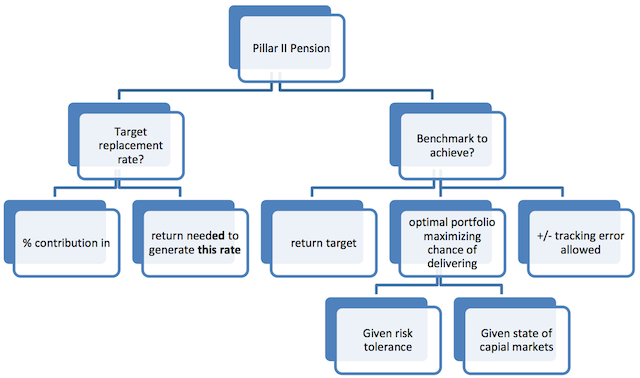Reverse Engineering DC Plans
(June 16, 2014) – The logical way to a design defined contribution (DC) pension is to do it backwards, a World Bank researcher has concluded—but she has found, most are not.
The widespread tendency to start with accumulation-phase asset allocation rather than retirement outcome has instilled dangerous short-termism into DC portfolios, according to Senior Financial Sector Specialist Fiona Stewart.
In her working paper for the World Bank, published last month, Stewart argued that reversing this counter-productive outlook is all a matter of incentives.
As it stands now, she wrote, in most countries private-sector providers are responsible for DC plan design and have one motivation: generating fees. This leads to herding, as providers aim to minimize tracking error against their competitors.
For commercial DC providers, “the potential downside of taking risks outweighs the upside. Herding could also lead to everyone taking too much risk for a long-term perspective,” Stewart continued, citing the high level of equities present in many US target-date funds at the time of retirement. “A manager’s set of incentives does not include being too much above the market in one year and below the other.”
Here’s where regulators could step in—and, in a few countries, already have. According to Stewart, the best way to realign providers’ incentives with member outcomes would be mandated benchmarking. Regulators could set acceptable ranges of tracking error relative to reference portfolios that optimize the likelihood of replacing a certain portion of income throughout retirement. Rather than incentivizing providers to perform in-line with markets from year to year, they would be measured for long-term delivery of retirement security.
Stewart advocated for independent bodies of experts to establish these benchmark portfolios rather than governments, which would likely set “conservative and easy to achieve” targets.
Reference portfolios have already been implemented by a handful of institutions, including the UK’s National Employment Savings Trust and the New Zealand Superannuation Fund. Both measure the performance of actual portfolios against passive, low-cost models with long-dated targets.
However, Stewart did note that the strategy presented several practical challenges, including its reliance on sound risk/return assumptions and governance structures.
“This paper does not pretend to have all the implementation answers,” the author acknowledged, “but the adoption of the philosophy can go a long way to helping ensure that the suite of regulatory measures is better designed towards achieving secure, adequate income in retirement, which is the ultimate goal of all our pension systems.”
Read Fiona Stewart’s full World Bank working paper—“Proving Incentives for Long-Term Investment by Pension Funds: The Use of Outcome-Based Benchmarks”—here.
Related Content: Dunatov: Volatility Measure ‘Dangerous’ for Long-Term Investors; What DB Plans Can Learn from DB

Source: World Bank policy research working paper no. 6885 (2014)
